
Jules Gabriel Verne was a French novelist, poet, and playwright. His collaboration with the publisher Pierre-Jules Hetzel led to the creation of the Voyages extraordinaires, a series of bestselling adventure novels including Journey to the Center of the Earth (1864), Twenty Thousand Leagues Under the Seas (1870), and Around the World in Eighty Days (1872). His novels, always well-researched according to the scientific knowledge then available, are generally set in the second half of the 19th century, taking into account the technological advances of the time.

Twenty Thousand Leagues Under the Seas is a science fiction adventure novel by the French writer Jules Verne. It is often considered a classic within both its genres and world literature. The novel was originally serialised from March 1869 to June 1870 in Pierre-Jules Hetzel's French fortnightly periodical, the Magasin d'éducation et de récréation. A deluxe octavo edition, published by Hetzel in November 1871, included 111 illustrations by Alphonse de Neuville and Édouard Riou.
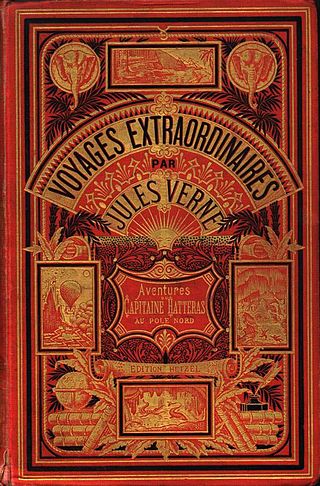
The Voyages extraordinaires is a collection or sequence of novels and short stories by the French writer Jules Verne.
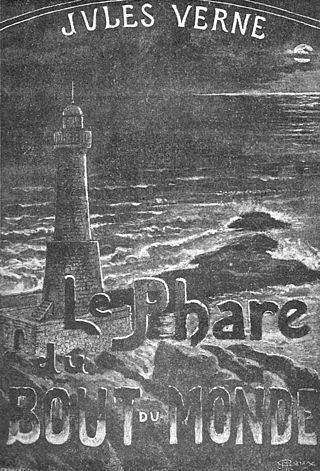
The Lighthouse at the End of the World is an adventure novel by French author Jules Verne. Verne wrote the first draft in 1901. It was first published posthumously in 1905. The plot of the novel involves piracy in the South Atlantic during the mid-19th century, with a theme of survival in extreme circumstances, and events centering on an isolated lighthouse. Verne was inspired by the real lighthouse at the Isla de los Estados, Argentina, near Tierra del Fuego and Cape Horn.

Les Indes noires is a novel by the French writer Jules Verne, serialized in Le Temps in March and April 1877 and published immediately afterward by Pierre-Jules Hetzel. The first UK edition was published in October 1877 by Sampson Low, Marston, Searle and Rivington as The Child of the Cavern, or Strange Doings Underground. Other English titles for the novel include Black Diamonds and The Underground City.

Two Years' Vacation is an adventure novel by Jules Verne, published in 1888. The story tells of the fortunes of a group of schoolboys stranded on a deserted island in the South Pacific, and of their struggles to overcome adversity. In his preface to the book, Verne explains that his goals were to create a Robinson Crusoe-like environment for children, and to show the world what the intelligence and bravery of a child were capable of when put to the test.

Facing the Flag or For the Flag is an 1896 patriotic novel by Jules Verne. The book is part of the Voyages extraordinaires series.
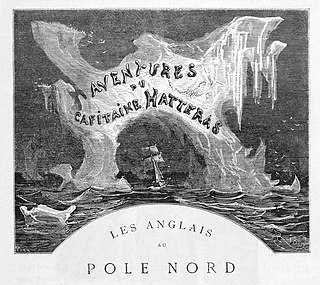
The Adventures of Captain Hatteras is an 1864 adventure novel by Jules Verne in two parts: The English at the North Pole and The Desert of Ice.

The Sea Serpent: The Yarns of Jean Marie Cabidoulin is an adventure novel by French author Jules Verne first published in 1901. The story centers on a French whaling ship, the St. Enoch, which sets out from Le Havre on a voyage to kill whales for their meat and oil. The ship's cooper is the eponymous Cabidoulin, a firm believer in the existence of a giant serpent with a habit of dragging vessels to their doom.
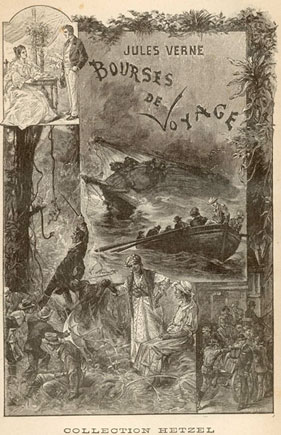
Travel Scholarships is a 1903 adventure novel by Jules Verne.

Doctor Ox is a collection of short stories by Jules Verne, first published in 1874 by Pierre-Jules Hetzel.
Stanford Leonard Luce Jr was an American academician known for his work on Louis-Ferdinand Céline and for his English translations of Jules Verne books, especially The Kip Brothers and The Mighty Orinoco, which he was the first to translate into English.

"A Drama in the Air" is an adventure short story by Jules Verne. The story was first published in August 1851 under the title "Science for families. A Voyage in a Balloon" in Musée des familles with five illustrations by Alexandre de Bar. In 1874, with six illustrations by Émile-Antoine Bayard, it was included in Doctor Ox, the only collection of Jules Verne's short stories published during Verne's lifetime. An English translation by Anne T. Wilbur, published in May 1852 in Sartain's Union Magazine of Literature, marked the first time a work by Jules Verne was translated into the English language.
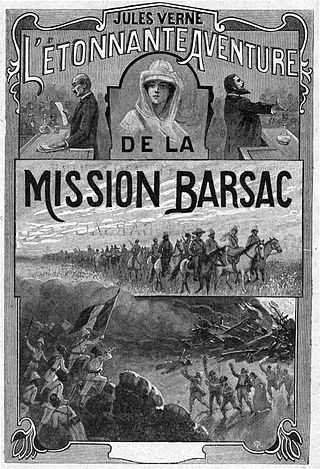
The Barsac Mission is a novel attributed to Jules Verne and written by his son Michel Verne. First serialized in 1914, it was published in book form by Hachette in 1919. An English adaptation by I. O. Evans was published in 1960 in two volumes, Into the Niger Bend and The City in the Sahara. It includes a hidden city, called in English "Blackland", in the Sahara Desert.
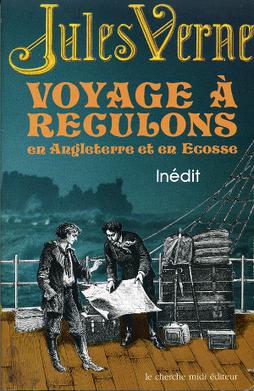
Backwards to Britain is a semi-autobiographical novel by the French writer Jules Verne, written in the fall and winter of 1859–1860 and not published until 1989.

Journey Through the Impossible is an 1882 fantasy play written by Jules Verne, with the collaboration of Adolphe d'Ennery. A stage spectacular in the féerie tradition, the play follows the adventures of a young man who, with the help of a magic potion and a varied assortment of friends and advisers, makes impossible voyages to the center of the Earth, the bottom of the sea, and a distant planet. The play is deeply influenced by Verne's own Voyages Extraordinaires series and includes characters and themes from some of his most famous novels, including Twenty Thousand Leagues Under the Seas, Journey to the Center of the Earth, and From the Earth to the Moon.

Jules Verne (1828–1905) was a French novelist, poet, and playwright. Most famous for his novel sequence, the Voyages Extraordinaires, Verne also wrote assorted short stories, plays, miscellaneous novels, essays, and poetry. His works are notable for their profound influence on science fiction and on surrealism, their innovative use of modernist literary techniques such as self-reflexivity, and their complex combination of positivist and romantic ideologies.
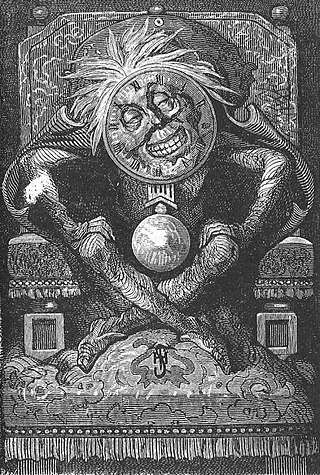
Master Zacharius, or the clockmaker who lost his soul is an 1854 short story by Jules Verne. The story, an intensely Romantic fantasy echoing the works of E. T. A. Hoffmann, is a Faustian tragedy about an inventor whose overpowering pride leads to his downfall.

The Thompson Travel Agency is a 1907 novel attributed to Jules Verne but written by his son Michel Verne.
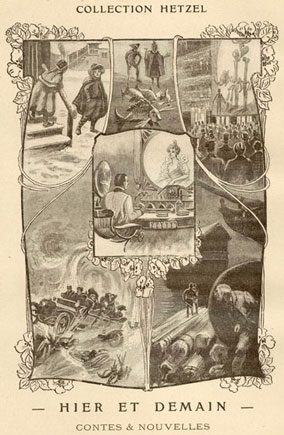
Yesterday and Tomorrow is a posthumous collection of short stories by Jules Verne, first published in 1910 by Louis-Jules Hetzel.



















